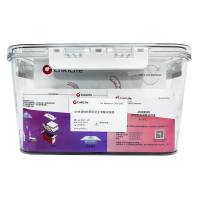Protein analysis usually requires the application of immunological techniques, and, in the preceding chapter, the use of antibodies (Abs) to label proteins in tissue sections has been described. Proteins in unfixed frozen sections are in near native form, and analysis of proteins in these circumstances represents a close approximation to the situation in vivo. In contrast, analysis of tissue proteins by denaturing polyacrylamide gel electrophoresis (PAGE) and Western blot analysis represents a very artificial situation, in which the nature of the technique requires each protein to be completely denatured: subunits dissociated, and each polypeptide chain unfolded. Basically, the polypeptides in a complex mixture are solubilized and sieved through a PAG matrix (under the influence of an electric current), in which they separate according to size. Large polypeptides remain near the top of the gel; smaller species pass further down the matrix. If the gel is stained with a nonspecific protein stain, such as Coomassie blue, it can be seen that each polypeptide chain is represented by a band at a different position down the gel; a sample of skeletal muscle could be separated into several hundred different bands, many overlapping. Such a large number of overlapping bands is very difficult to analyze, so that the separated polypeptides are often electrophoresed out of the gel and blotted onto charged paper (usually nitrocellulose). Unlike the fragile gel, this paper (or Western blot) is easily handled, and can be labeled with specific Abs, so that single bands or groups of bands can be visualized in each sample lane.






